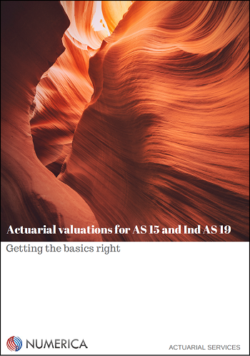
Before we start with taxation on superannuation fund, let us understand what exactly is a superannuation fund.
Makes sense, so what is superannuation fund ?
Cambridge dictionary defines “superannuation” as “money that people pay while they are working, so that they will receive payment when they stop working when they are old, or the payment they receive when they stop working”
So, in simple words, superannuation funds refer to the retirement benefit offered in the form of pensions (generally, monthly payments).
There are two types of superannuation benefits.
- Defined Benefit (or DB):
- The benefits are known and fixed.
- The amount of benefit is usually based on a formula linked to salary and years of service.
- Risk ownership: Employer
– since the payments are guaranteed
– employer has to contribute appropriate amount to the fund.
– risks include financial and demographic risks
- Defined Contribution (or DC) :
- The contributions is known and fixed.
- However, the end benefit (at retirement, for instance) is not guaranteed.
- Risk ownership: Employee
– as the employees do not know the amount of benefit at exit (death / retirement).
– employer contribution is certain
– risks include financial risks, such as lower than expected return
So, how is it different from Gratuity ?
There are a few differences:
- The key difference being that superannuation benefit is in the form of monthly pension payments (generally). There maybe a commutation option on these depending on the company policy.
- They are not required by law, whereas, gratuity is mandatory as per PG Act, 1972
Having said the above, the tax treatment principles are (kind of) similar to the gratuity fund. Read about taxation on gratuity fund here.
Before, we dwell further into the taxation of superannuation fund, let us understand the following:
What is an approved superannuation fund?
An approved superannuation fund refers to a fund which is approved and continues to be approved by the Commissioner in accordance with the rules set out in Part B of the Fourth Schedule of the Income Tax Act.
Contributions to the Fund
For example, let us assume that one of the Company pays 15% of basic wages as superannuation contribution. There is no contribution from the employee. Interest on contributions is credited to the member’s account. Normally the rate of interest is equivalent to the PF interest rate. In this case, “15% of basic wages” is the “employer’s contribution”
Tax treatment
Employer’s contribution to an approved Superannuation fund is allowed as a tax-deductible expense, subject to following:
- Contribution amount up to Rs 1 lakh per annum per employee is exempt from tax for employer.
- If the employer makes any contribution beyond Rs 1 lakh such excess shall be taxable for the employer.
- The exemption amount is also subject to 25% of respective employee’s salary. These limits are set out in Rule 87 and 88 and explained below
- Rule 87: Ordinary annual contributions.
- The ordinary annual contribution by the employer to a fund in respect of any particular employee shall not exceed 25% of his salary for the respective year as reduced by the employer’s contribution to any other fund in respect of same employee in that year.
- Rule 88: Initial contributions.
- The contribution to the fund shall not exceed for each year of past service shall not exceed the following limits:
- 25% of the employee’s salary for each year up to the 21st September, 1997 or
- 27% of the employee’s salary for each year after 21st September, 1997
- The contribution to the fund shall not exceed for each year of past service shall not exceed the following limits:
- There are few clarifications with regard to Rule 87 and Rule 88:
- The rules refer not only to the limits prescribed for the recognition and approval of the fund, but also relate to the contributions thereafter made
- These limits are as reduced by employer’s contribution to any other fund in respect of the same employee in that year.
- For more details (for instance, if you contribute to more than one fund or for detailed calculations), click here
- Rule 87: Ordinary annual contributions.
Conclusion of tax treatment:
- The contributions made to the approved superannuation funds are allowed as deductions against business income of employer
- However, there is an upper limit of Rs. 1 lakh per employee to the extent allowable as per Rule 87 & Rule 88 (discussed above)
- These contributions are further subject to the to the provisions of Section 43B i.e. the amount for any previous year must have been actually paid either during the same previous year or on/before the due date of furnishing of return of income of that previous year.
All good so far, but what if I pay pension to employees but don’t have a fund for it as such ?
Well, in that case, any amount of pension paid during the respective year is allowed as business expenditure under the head “Profit and Gains of Business or Profession”. This implies that the entire amount is tax-deductible.
There are obviously some conditions to this, but they exist only to avoid misuse of a well-intended tax benefit (Read more here).
(Since you do not contribute to a fund, your superannuation scheme is termed “unfunded”)
Please note, as actuarial and risk-management professionals, we do not recommend unfunded approach. Please feel free to contact us to discuss this.
This blog post doesn’t constitute a professional advice.
Download our guide on basics of actuarial valuation under AS 15 and Ind AS 19 by clicking on the picture below:


December 07, 2018 at 1:26 pm, Joel J. C. said:
Dear Pooja,
You have mentioned this point:-
However, there is an upper limit of Rs. 1 lakh per employee to the extent allowable as per Rule 87 & Rule 88 (discussed above).
Under which section is this upper limit of 1 lac defined? I’ve tried really hard to find out but have been unsuccessful
Thank you,
July 19, 2024 at 10:18 am, KANAIYALAL KESHAVLAL THAKKER said:
Superannuation fund received on quiting or retirement,what is taxability under section 10 of income tax Act,1961
September 03, 2024 at 3:13 pm, Sagar said:
Could you please provide your valuable guidance on the below query?
If an employee, who continued his work in organisation post his retirement age i.e. 58 but neither contributed to Superannuation fund nor withdrawn contribution from fund immediately after his retirement.
Now, after 10-11 years he withdrew the fund, on such commutation amount will there be any tax liability from the employer side? This fund is received in the employer’s account.
Request your support and guidance please.